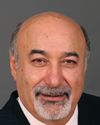Mr. Chairman, to respond to that question, the number of main battle tanks that have been added to the force has been said to be between four and fifteen. Regarding tactics, the army has taught for years, based on its own very lengthy experience, that you must have a combined arms battle team that consists of infantry, artillery, and heavy armour. The interaction between these three components is critical to the success in any tactical battle because each of them brings unique characteristics to the battlefield.
If you attempt to engage in conventional operations, for example in attacking a dug-in fixed position, you will find that using artillery and infantry alone makes for a very long process, particularly at the attack point. In such a case, the infantry, as it approaches the objective, is supported by the artillery, which fires on the objective, preventing the soldiers on the other side from directly firing at the infantry.
At some point, the infantry will get so close to the artillery that the artillery must stop firing because the fragments that come from our own artillery then threaten the lives of our infantry. At that point, in a space of about 300 metres, the other side is then able to emerge from its trenches and direct fire on our attacking infantry. At that point the infantry takes the majority of its casualties.
In order to reduce that further, main battle tanks move forward with the infantry, equipped particularly with machine guns and their main armaments, to provide the intimate fire support when our supporting artillery is forced to lift, and to continue the process of suppressing the defensive fire from the other side in order to place our infantry successively on the objective.
Most recently, neo-Taliban forces have changed tactics from using what might be described as hit and run operations to actually adopting fixed dug-in positions. It was the assessment of the commander, General Fraser, then, that if this is to be a possible line of tactics of the neo-Taliban in the future, he will require main battle tanks in order to be able to deal with such a situation.
I might observe as well that in addition to that squadron of tanks, the drafts of new additional troops being supplied to General Fraser include a number of combat engineers, particularly experienced officers who understand that as well as doing combat engineering things they can also supervise construction tasks. Those officers have been provided to act as project officers to deal with the small development and reconstruction tasks emerging, since these have been identified by the local people as something they require. The provision of these combat engineers plus additional funding through CIDA, through the provincial reconstruction team, allows them to deal with the smaller-scale reconstruction details that may include such things as driving wells, cleaning out the irrigation ditches that are involved, repairing roads, and doing that sort of thing. In addition, some of their own engineering armoured vehicles have been deployed with them. These are tract vehicles with the dozer blade on the front, and an arm that looks very much like what you'd find on a civilian backhoe, allowing them to do those sorts of tasks as well.
This additional deployment has a component directed towards improving the tactical balance of the Canadian Forces under General Fraser's command; an additional company provided to allow greater security for the joint civilian-military provincial reconstruction teams; and specialist engineer officers who are capable of undertaking and supervising these reconstruction projects, including hiring local labour to be part of that.
I would emphasize that this is an additional set of resources, ranging from those designed to deal with combat scenarios to those that are now dealing with practical, smaller-scale development scenarios.



